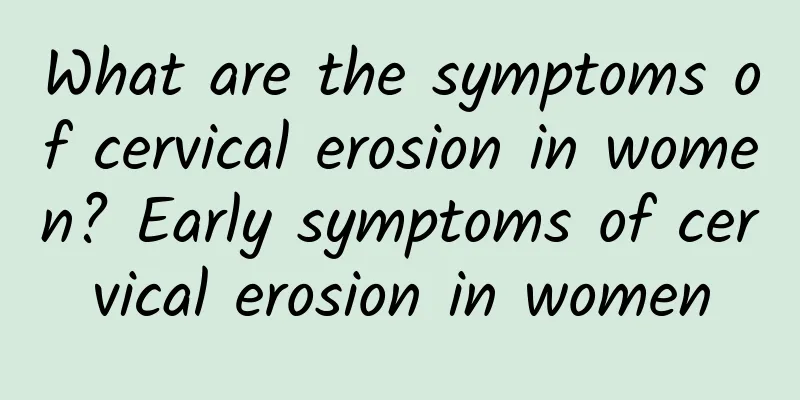How to check right adnexitis

|
Right-sided adnexitis can be diagnosed through gynecological examination, ultrasound examination and laboratory tests, and drug or surgical treatment can be adopted after the cause is determined. 1. Gynecological examination Gynecological examination is the first step in diagnosing adnexitis. The doctor palpates the patient's abdomen and pelvis to determine whether there is tenderness, mass or abnormal discharge. Right-sided adnexitis often presents with tenderness in the right lower abdomen, which may be accompanied by cervical lifting pain or thickening of the adnexal area. Gynecological examination can preliminarily determine the scope and severity of inflammation and provide a basis for subsequent examinations. 2. Ultrasound examination Ultrasound examination is an important auxiliary means of diagnosing adnexitis. Through abdominal ultrasound or vaginal ultrasound, the shape, size and structure of the right adnexal area can be clearly displayed, and abnormalities such as fallopian tube thickening, ovarian cysts or pelvic effusion can be determined. Ultrasound examination is non-invasive and safe, and can help doctors determine the specific location and extent of inflammation, providing a reference for formulating treatment plans. 3. Laboratory examination Laboratory tests include blood routine, C-reactive protein and vaginal secretion examination. Blood routine can reflect whether there is infection, and increased white blood cell count and neutrophil ratio indicate inflammation. C-reactive protein is a marker of inflammation, and its increased level is helpful for diagnosis. Vaginal secretion examination can determine whether there is pathogen infection, such as bacteria, fungi or mycoplasma, providing a basis for targeted treatment. 4. Drug treatment Drug therapy is the main treatment for adnexitis. Antibiotics are the first choice, and commonly used drugs include cephalosporins, quinolones, and macrolides, such as ceftriaxone, levofloxacin, and azithromycin. For patients with pain, nonsteroidal anti-inflammatory drugs such as ibuprofen or acetaminophen can be used. Traditional Chinese medicine treatment also has a certain effect, such as Fuke Qianjin Tablets or Guizhi Fuling Pills, which have the effects of clearing away heat and detoxifying, promoting blood circulation and removing blood stasis. 5. Surgical treatment For patients who are not responsive to drug treatment or whose condition is severe, surgical treatment may be required. Common surgical methods include laparoscopic surgery and laparotomy. Laparoscopic surgery is less invasive and has a quick recovery, and is suitable for mild to moderate adnexitis. Laparotomy is suitable for complex cases, such as fallopian tube abscesses or extensive pelvic adhesions. Surgery can remove the infection focus, restore the normal anatomical structure of the pelvis, and prevent complications. The diagnosis and treatment of right-sided adnexitis requires a combination of multiple examination methods and individualized treatment plans. Early diagnosis and standardized treatment can effectively relieve symptoms, prevent complications, and improve the quality of life. If right lower abdominal pain, fever, or abnormal secretions occur, seek medical attention in a timely manner to avoid delaying the condition. |
<<: Is milky vaginal discharge normal?
>>: Should I remove my ovaries for an ectopic pregnancy?
Recommend
Experts analyze the main causes of pelvic inflammatory disease
Among many gynecological diseases, pelvic inflamm...
Why do women get cervical erosion? Revealing the real cause of cervical erosion
Erosion, these two words are scary, they easily r...
Hyperprolactinemia Hospital Directory
Hyperprolactinemia must have caught many patients...
How to treat women's habitual miscarriage
Many women who have an unexpected pregnancy are c...
Understand what symptoms are associated with vulvar leukoplakia
In recent years, the probability of women sufferi...
How can women distinguish uterine fluid accumulation?
Uterine effusion is a common gynecological diseas...
Will uterine fibroids recur after myomectomy? What are the main causes of uterine fibroid recurrence?
Will uterine fibroids recur after myomectomy? Ute...
Ovarian cysts should be prevented from malignant transformation, rupture or pedicle torsion.
If ovarian cysts are not treated promptly, the fo...
Traditional Chinese Medicine explains what is candidal vaginitis
Traditional Chinese medicine is a traditional Chi...
Symptoms of pelvic inflammatory disease explained by experts
Although pelvic inflammatory disease is one of th...
Experts introduce you to pregnancy with uterine fibroids
Do you know about pregnancy complicated with uter...
What are the dangers of multiple uterine fibroids?
What are the dangers of multiple uterine fibroids...
What are the clinical symptoms of uterine fibroids?
What are the clinical symptoms of uterine fibroid...
Sudanese red chili powder is circulating, and a new list of people affected has been revealed! Nutritionist: 4 ways to promote metabolism by eating by mistake
The issue of "Sudan Red" chili powder c...
What should women pay attention to in their daily care for adnexitis?
After women suffer from adnexitis, it is importan...









